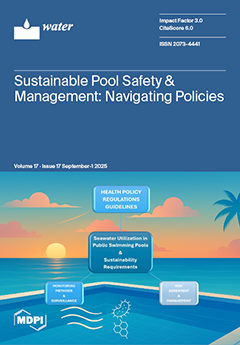This review provides a critical and technically grounded assessment of continuous electrocoagulation processes (CEPs) for the treatment of industrial inorganic pollutants, emphasizing recent innovations, methodological developments, and practical outcomes. A comprehensive literature survey indicates that 53 studies published over the past 25 years
[...] Read more.
This review provides a critical and technically grounded assessment of continuous electrocoagulation processes (CEPs) for the treatment of industrial inorganic pollutants, emphasizing recent innovations, methodological developments, and practical outcomes. A comprehensive literature survey indicates that 53 studies published over the past 25 years have investigated CEPs for inorganic contaminant removal, with 36 focusing on standalone electrocoagulation systems and 17 exploring integrated CEPs approaches. Recent advancements in reactor design, such as enhanced internal mixing, optimized electrode geometry, and modular configurations, have significantly improved treatment efficiency, scalability, and operational stability. Evidence indicates that CEPs can achieve high removal efficiencies for a wide range of inorganic contaminants, including fluoride, arsenic, heavy metals (e.g., chromium, lead, nickel, iron), nitrates, and phosphates, particularly under optimized operating conditions. Compared to conventional treatment methods, CEPs offer several advantages, such as simplified operation, reduced chemical consumption, lower sludge generation, and compatibility with renewable energy sources and complementary processes like membrane filtration, flotation, and advanced oxidation. Despite these promising outcomes, industrial-scale implementation remains constrained by non-standardized reactor designs, variable operational parameters, electrode passivation, high energy requirements, and limited long-term field data. Furthermore, few studies have addressed the modeling and optimization of integrated CEPs systems, highlighting critical research gaps for process enhancement and reliable scale-up. In conclusion, CEPs emerge as a novel, adaptable, and potentially sustainable approach to industrial inorganic wastewater treatment. Its future deployment will rely on continued technological refinement, standardization, validation under real-world conditions, and alignment with regulatory and economic frameworks.
Full article





